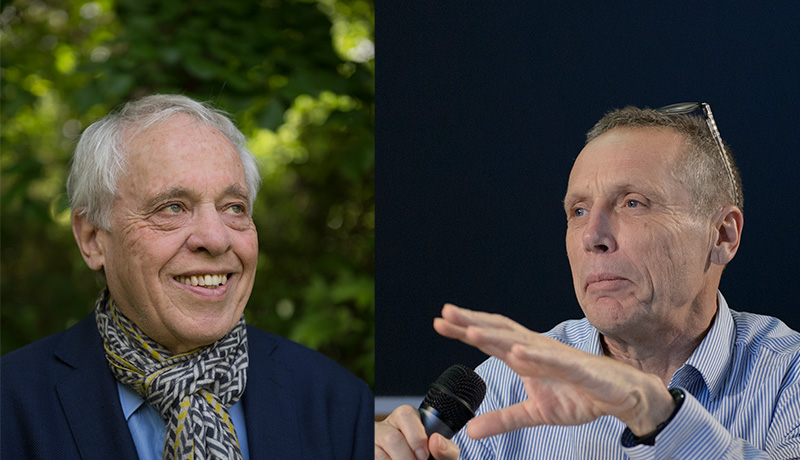JOSEPH SILK AND NICHOLAS KAISER RECEIVE THE 2019 GRUBER COSMOLOGY PRIZE
In May 2019, Joseph Silk and Nicholas Kaiser received the prestigious Cosmology Prize from the Gruber foundation (considered the “Nobel of Cosmology”), for their complementary results in two major areas of research: “the theory of cosmological structure” and “the creation of new probes of dark matter”. They will divide the financial award, and each will receive a gold medal at a ceremony that will take place on June 28 at the “CosmoGold” conference at the Institut d’astrophysique de Paris, in France.
The cosmic background radiation, the radiation emitted in all directions of the Universe at microwave wavelengths, is considered as a “fossil” of the Big Bang (name given to the process of the formation of the Universe, followed by an expansion until the present time). This radiation is not uniform, it bears small fluctuations in its temperature that are the imprint of the small variations in the matter density; these result from the physical conditions in the primordial Universe (shortly after the Big Bang) and led eventually to the formation of stars and galaxies that astronomers observe today, 14 billion years after the Big Bang. Joseph Silk published in 1968 the results of a calculation according to which fluctuations below a critical size (called “Silk damping scale”) may have been partly suppressed because of the diffusion of the photons from the background radiation, from the warmer regions of space to the cooler ones.
Understanding the distribution of galaxies in the present Universe, that appears in the form of a cosmic web of voids, filaments and walls, requires a large amount of invisible matter, called “dark matter”. In a series of papers initiated in 1984, Nicholas Kaiser proposed various statistical tools that allow astronomers to extract useful information (and poorly affected by noise) from the surveys of the galaxy distribution; the characteristics of this distribution at large scales carry the imprint of the properties in the Universe after the Big Bang, that the researchers can then study thanks to the tools developed by Nicholas Kaiser. In 1987, he also showed how the movements of galaxies under the effect of the dark matter affect their observed distribution in maps of the galaxy distribution. And in 1992, he showed how the statistical measures of the small distortions in the shape of galaxies (making them appear more elongated) is bearing information about the distribution of dark matter in the Universe. This effect is called “weak lensing” - a phenomenon predicted by Einstein’s equations for general relativity in which a foreground galaxy gravitationally distorts the light from a background galaxy. One of the major goals of the forthcoming Euclid satellite, under construction, is to measure the weak lensing effects to a high level of precision.
Much evidence for dark matter lies in its gravitational effects: the weak-lensing effect, is one example; another is the excess velocities of stars in the outskirts of galaxies indicating that the latter contain more matter than is visible in the form of stars. In 1984, Joseph Silk proposed some indirect signatures of dark matter particles that would be caused through their self-annihilation into particles (such as antiprotons and positrons in cosmic rays; or high energy neutrinos), or radiation (gamma rays), all of which can be detected from Earth.
The work of Joseph Silk and Nicholas Kaiser has therefore been seminal to modern cosmology, that is the study of the origin and evolution of the Universe using state of the art observatories and detectors, as well as physical theories. Each of them has made other significant contributions to their field, yet their independent but complementary results on the cosmic microwave background and the dark matter have opened new and essential windows on our understanding of the Universe.
Both Joseph Silk and Nicholas Kaiser are currently affiliated with institutions in Paris: Joseph Silk as an emeritus professor and a research scientist at the Institut d'astrophysique de Paris (in addition to a one-quarter appointment at The Johns Hopkins University); Nicholas Kaiser as a professor at the École Normale Supérieure in Paris.

Joseph Silk and Nicholas Kaiser (credit: Jean Mouette /IAP-CNRS-SU)
Link
Writing: Valérie de Lapparent
Layout and iconography: Jean Mouette
June 2019
